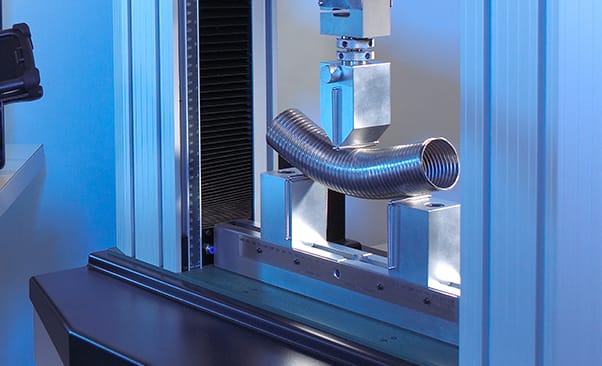EU adopts MiCA: An opportunity for crypto startups?
Last week, the EU Parliament passed MICA, which will come into effect in 2024. MICA is the most comprehensive crypto legal framework in the World. So what does that mean for crypto businesses?

Legal clarity is vital for businesses. Founders have to understand the game rules to play. We have been discussing regulation in the crypto world since its early beginnings. Crypto companies have spent millions on compliance and (mainly in the USA) fought litigation wars. Around the time when the EU Parliament passed MiCA, a hearing of Gary Gensler, chair of the SEC, took place in the USA Congress. He was unable to answer if Ether was a security or not.
MiCA has opened a series of interesting questions and discussion opportunities. The EU was pursuing several goals while drafting and deciding on the MiCA. Still, we are primarily interested in MiCA bringing legal certainty for crypto businesses (token issuance, exchange, custody etc.). Is it beneficial for you to relocate (or continue running your business) to the EU? But let's look into it from a very practical perspective of an entrepreneur.
Crypto services providers
Let's first see what this means from the services providers, such as exchanges, custodians, and other similar businesses.
Figure out if you are a CASPer
Crypto asset services providers (CASPs, or, for our entertainment rather CASPers) are companies involved in the following:
- the custody and administration of crypto-assets on behalf of third parties;
- the operation of a trading platform for crypto-assets;
- the exchange of crypto-assets for fiat currency that is legal tender;
- the exchange of crypto-assets for other crypto-assets;
- the execution of orders for crypto-assets on behalf of third parties;
- placing of crypto-assets;
- the reception and transmission of orders for crypto-assets on behalf of third parties; or
- providing advice on crypto-assets.
If you believe or suspect you fall within one of these categories, you might be a CASPer. Get in touch if you are not sure. We will analyse your existing or envisaged business model and help you understand if you are a CASPer.

CASPers have to be authorised
CASPers must register and obtain authorisation from the competent authority in the member state of their registered office. CASPers will have to comply with many rules, such as:
- passing a fit and proper test,
- maintaining minimum share capital (150kEUR for trading platforms, 125k EUR for custodians and exchanges, and 50kEUR for all the others),
- organisational requirements,
- business continuity scenarios,
- risk management,
- security and integrity of information,
- market abuse detection,
- anti-money laundering mechanisms, and
- safekeeping of funds.
As you can see, compliance requirements will not be easy for many, particularly smaller companies. Get in touch if you require assistance with getting compliant.
CASPer will enjoy EU passport benefits
As said initially, it's not all black and white. Once authorised, CASPers will enjoy the privilege of offering their services across the EU 🇪🇺 (which is, if you are not aware, a larger market than the USA (447 mil v 333 mil 👀).
This is a huge opportunity! Businesses can now rely on being compliant across the whole EU block and address a vast market. So in principle, you will only have to talk to one regulator in your home state (unless you are significantly big and will be supervised by ESMA).
Token sales the MiCA way: Are ICOs back in the game?
MiCA also covers issuing tokens and provides a logical and clear set of rules. So after the era of token issuers fleeing to some strange jurisdictions, they might return to the EU now.
MiCA token taxonomy
MiCA breaks down tokens into the following categories:
- A crypto-asset is a digital representation of value or rights which may be transferred and stored electronically, using distributed ledger technology or similar technology. A typical representative of this class would be Bitcoin.
- A utility token is a type of crypto-asset which is intended to provide digital access to a good or service, available on DLT, and is only accepted by the issuer of that token. Many tokens, issued through ICOs or other offerings would fall under this category.
- An asset-referenced token is a type of crypto-asset that purports to maintain a stable value by referring to the value of several fiat currencies that are legal tender, one or several commodities or one or several crypto-assets, or a combination of such assets. This category was probably created with the original Libra coin in mind and could potentially reflect the DAI token or already defunct Luna's UST.
- An e-money token (EMT) is a type of crypto-asset the main purpose of which is to be used as a means of exchange and that purports to maintain a stable value by referring to the value of a fiat currency that is legal tender. In ordinary people's language, e-money tokens are core stablecoins, which reflect the value of a one single fiat currency, such as USDT.
In principle, but not necessarily (you must love lawyers), NFTs do not fall within the scope of MiCA.
Categorising crypto assets is a brave (and probably also futile) endeavour. In our view, a token is a medium of content and rights defined to be attached to it. It would have been arrogant to say that tokens, which do not fit into either of these categories, cannot be designed. Also, crypto space invents something new every six months. So why did the EU try to categorise tokens? The reason is that MiCA is a very extensive piece of legislation covering various situations. Not all tokens shall be subject to the same rules; therefore, categories of tokens must be defined.

Let's launch an ICO
Yes, indeed. We came so far that you can launch an ICO in the EU, and it is pretty clear how to do it.
While the process is not that simple and different for each category of tokens, we can draw some main learnings from it (and still keep it relatively short).
You will have to draft a detailed white paper. The EU supervisory authorities will establish the exact disclosure details and white paper templates to use in the next 12 months.
You must notify a competent authority in your member state about your upcoming token sale and white paper at least 20 days before publication. Their approval is not required, but they can prohibit the issuance of your token. If you launch an asset-referenced token, you must seek explicit prior approval from the regulator. And only licenced e-money institutions or credit institutions will be allowed to issue e-money tokens in the EU.
Consumer protection logic has also been brought into the game, and now retail purchasers will enjoy a right to return the purchased tokens and request reimbursement of the purchase price within 14 calendar days from the purchase.
As mentioned, MiCA also introduces rules against market manipulation and insider trading. Using insider information to benefit from trading activities will be illegal. That also means that influencers shall be careful promoting tokens without disclosing their roles.
Overall, we think MiCA is good for business
While the USA is still in the "is it a security" debate, MiCA is bringing much clarity to the crypto business in the EU. I agree with those concerned with the costs related to being compliant, particularly when it comes to startups. Indeed, the bar has been set high, and compliance now presents a barrier to entry for the challengers. But on the other side, regulatory clarity also reduces legal costs. It is cheaper to be compliant when the game's rules are clear. EU now offers precisely that. Let's build.




